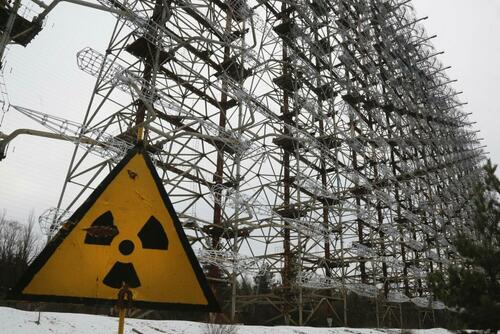from ZeroHedge:

Poland has begun a program of distributing iodine tablets to emergency workers and first responders, starting with regional fire departments – who can in turn hand them out to the general population – in the event of a possible radioactive disaster at Europe’s largest nuclear power plant.
A Polish deputy minister first announced the plan on Thursday, warning of the possibility of dangerous radioactive exposure amid continued fighting in neighboring Ukraine, where technicians at the Zaporizhzhia Nuclear Power Plant continue to struggle to maintain safeguards.
TRUTH LIVES on at https://sgtreport.tv/
“After the media reports about battles near the Zaporizhzhia Nuclear Power Plant, we decided… ahead of time to take protective action to distribute iodine,” the Polish official, Blazej Pobozy, said in a national radio broadcast.
“I would like to reassure all citizens that these are routine, preemptive actions that are to protect us in the event of a situation which… I hope will not happen.” Iodine tablets can help protect against conditions associated with radioactive exposure such as thyroid cancer.
The plant has suffered frequently cut power cables, having been removed from the nation’s power grid multiple times and reverting to back-up measures, amid shelling in the area as some 500 Russian troops have occupied the complex since March.
Both sides have continued to blame the other for the deteriorating operating conditions, which earlier in the month caused plant operators to take a sixth reactor off the grid out of an abundance of caution while a power line was being restored after fire.
Earlier this month, Ukrainian President Volodymyr Zelenskiy said, “Due to Russian provocation, the Zaporizhzhya plant is one step away from a radiation disaster.”
Ukrainian-controlled Zaporizhzhia city lost a lot of power after the electricity infrastructure was hit pic.twitter.com/66PLeiSDF4
— LogKa (@LogKa11) September 22, 2022
A couple of IAEA officials are still present at the site, with the UN nuclear watchdog talking about implementing plans to establish a “nuclear safety and security protection zone” around the plant.
Various attempts have been made to model the impact of potential radiation fallout centered at Zaporizhzhia…
This map shows the potential radiation fallout from a Zaporizhzhia nuclear plant disaster pic.twitter.com/ZBzwIjlzjP
— Samuel Ramani (@SamRamani2) August 18, 2022
Below is a timeline review of events based on Ukrainian regional reporting and Yahoo News:
- Russia captured the Chornobyl NPP in the beginning of the full-scale invasion in Ukraine. On 4 March, it captured the Zaporizhzhia NPP, creating a threat of radiation disaster. In mid-March, Russian occupying forces detonated ammunition on the territory of the ZNPP.
- On 15 July, Energoatom reported that Russia had deployed several missile systems on the territory of the ZNPP. Russian forces were using these weapons to fire on the area around the city of Nikopol.
- On 1 September, the International Atomic Energy Agency (IAEA) mission arrived at the ZNPP.
- On 2 September, Rafael Grossi, Director General of the IAEA, confirmed that two representatives of the organisation would remain at the ZNPP after the mission was over.
- On 5 September, four out of six IAEA inspectors finished their inspection of the plant and left the ZNPP. Two IAEA workers remained at the power plant.
- On 5 September, as a result of a fire caused by Russian shelling of the ZNPP, the last line connecting the ZNPP and the Zaporizhzhia Thermoelectric Power Plant to Ukraine’s power grid was disconnected.




